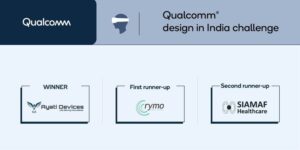Based in Singapore, Nav Pawera is the Head of Design at Jiva, a company aiming to support the 525 million smallholder farmers around the world. A product and service design expert with 20+ years of experience, he was formerly at Opera and Buuuk.
Nav is speaking at the DesignUp 2022 conference in Bengaluru on September 17-18. As media partner, see YourStory’s earlier coverage of DesignUp conferences and sessions from 2021, 2020, 2019, 2018 and 2017.
A graduate of Punjab Technical University, Nav’s clients have included Singtel, Daimler (Mercedes), Tupperware, Scoot Airlines, Temasek Holdings, National Environment Agency, Singapore Power, DesignSingapore Council, NTUC, Singapore Press Holdings, DB Schenker Logistics, and CapitalMalls.
See also YourStory’s Book Review section with takeaways from over 340 titles, and our d-Zen (‘Design Zen’) section for more design resources.
Nav joins us in this interview on managing design teams, creativity, resilience, and startup tips.
Edited excerpts below:
YourStory: That’s quite a creative streak you have–from digital products to farmer support! How did that come about?
Nav Pawera: It’s sort of been an organic evolution of my career. Digital was the most accessible and exciting domain for me to get started in 20 years ago. First Web 2.0, then mobile web and then ultimately the iPhone—it was easy to get into the designing for these platforms.
As I got more curious about how to make more impact through my work, I started moving upstream towards the source of the problems. I realised that a lot of problems needed more than just digital solutions, and that led to learnings in designing for non-digital experiences. Now I see this being critical to designing for impact at scale.
In my last gig I was designing primary and long-term care for diabetes patients—designing clinics, delivery mechanisms, healthcare roles, digital tools and so on. I came across Jiva at the right time and it felt like an obvious next step!
YS: Tell us about your work at Jiva-what’s been the journey so far, and what’s ahead?
NP: It’s been fun, incredibly fulfilling, and quite busy! Before joining Jiva, I pitched a new structure and plan for the design team here—this unlocked some very interesting conversations and led me to joining the team early last year just when Jiva was rolling out.
We’ve been building the design team, and designing multiple products and services at the same time as well. In 15 months, we’ve grown from around 50 people at Jiva to over 400! It still feels like we’re just getting started though. We have some very ambitious plans and a lot of work ahead of us.
YS: What have been some of your experiences with failure and mistakes? How does a creative person learn, cope, and move on?
NP: There’s been times when failures felt like they were part of the plan. Failing felt like a great way to learn and grow—in personal life, work projects, but also at a career level (I took up product management roles early on in my career for instance).
Most of these times, failure didn’t bother me and I was able to just focus on the next steps. I can look back at all these as extremely enriching experiences. There have also been times when failure has stunned me and made me immobile.
During these times, I’ve needed support—family, friends, and colleagues, and sometimes also professional support (coaching and guidance). I drove myself to burnout a couple of years ago, for instance.
These experiences have made me realise that my reaction to a failure usually has nothing to do with the magnitude or nature of failure. Often this has happened when I wasn’t taking care of myself—physically and mentally.
So, I’d say, my biggest take away has been to make sure I am taking care of myself, regardless of how busy or intense things might get.
YS: Many of our readers are tech startups. What is your advice to them on when they should start seriously integrating design and UX in their journeys?
NP: You can’t tell anyone to be intentional about what they are creating—they have to want to do it. It’s the same with design. I think paying attention to desirability of your products and tools is key from day one, but don’t do it because you read this article or someone told you so.
Go ahead only if you feel a clear need for it; if you can see value in it. Otherwise, you’re not going to get a good return on your investment, and you’ll create a miserable environment for your design team.
YS: Is there a particular age when people are most creative, or can the creative bug strike you at any time?
NP: Being good at any craft takes hard work. I don’t believe it has anything to do with age, but with your ability to commit to it.
If you start late, you may have to spend time to unlearn certain things that you may have trained yourself in. If you start early, you’ll need to be patient to build experience (which most ambitious youth will find hard).
YS: How did the pandemic affect your work and other activities? How did you cope?
NP: I don’t think there’s anything new I can add here! But short answer is—very badly!
Initially, I was actually a little excited about the challenge of the pandemic—we would have to redesign how we work, how we conduct research, test prototypes, and so on. But very quickly the sad and painful reality of it all took over and it became hard to stay positive. It was hard to stay focused on work when people around you were struggling.
I was designing for the healthcare sector at this point, so this was an extremely difficult time. I also live in Singapore, away from my family. Hope we don’t have to go through that again!
YS: What are the challenges faced while moving from a designer role to becoming a manager of designers? How can the challenges be tackled?
NP: This is something I try to spend a lot of my time working on—to learn, practice, and help others.
The first thing I would say is that most people severely underestimate how big a career change this actually is. I have seen way too many great designers being burnt quickly when they transition to manager roles.
Being creative with a blank canvas is one thing, but keeping your team motivated (and being responsible for their output when they are not)—these are two very different skills. There is a clear lack of transition roles, education or even training for this transition.
Also, as an industry, we don’t seem to value those who want to spend time in honing their craft. Every career path seems to lead to management. I think this needs to change.
YS: What are some must-read books about design that our audience should have?
NP:
Hell Yeah Or No: What’s Worth Doing by Derek Sivers
Liminal Thinking: Create the Change You Want by Changing the Way You Think by Dave Gray
Radical Candor: Be a Kickass Boss Without Losing Your Humanity by Kim Malone Scott (ignore that it says boss in the title!)
Design Is a Job by Mike Monteiro
Paul Rand: Conversations with Students by Michael Kroeger
The Shape of Design by Frank Chimero.
YS: How can the design community and academia work together to increase ‘design quotient’ in society? What are some of your activities in this regard?
NP: I think there is a huge opportunity for participatory design, co-creation between designers and those who design pillars of the society—be it public spaces or policies that govern our lives.
This is one place where I think academia can shine—by using these as opportunities to elevate design education and collaborating with experienced designers.
I have not spent much time in contributing to this—perhaps on day. I give a couple of lectures every year but they are mostly focused on showing how text-book design translates to the real world.
YS: If you were to write a book now, what would it be about?
NP: Probably a handbook for designers looking to transition into a management role. 90% of it would try to talk them out of it. The last 10 percent would be a guide to finding and evaluating a good coach to work with.
YS: What is your parting message to the aspiring entrepreneurs in our audience?
NP: Stealing a quote from Mike Monteiro—“Don’t fail with your own money! Use old people to your advantage!”

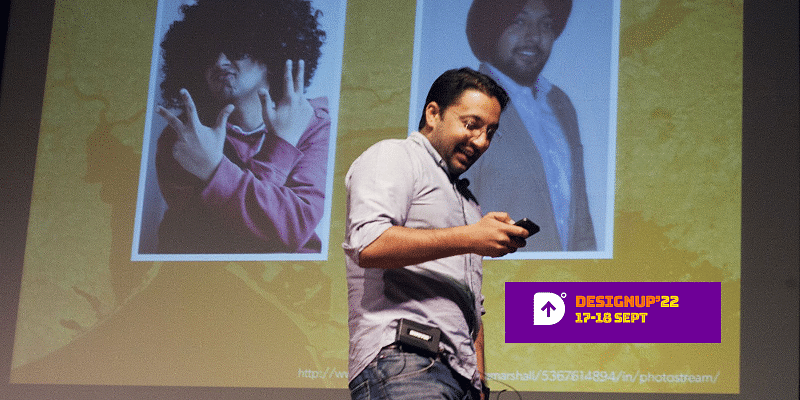
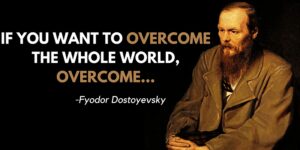


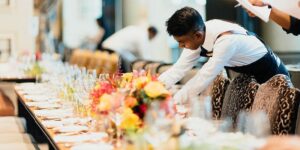

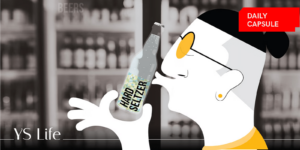
![Read more about the article [Funding alert] Autonomous procurement startup Aerchain raises $3M in pre-Series A from IndiaMart and Season2 VC](https://blog.digitalsevaa.com/wp-content/uploads/2021/08/feature15627598600911574830759090png2-1628833988915-300x150.png)

